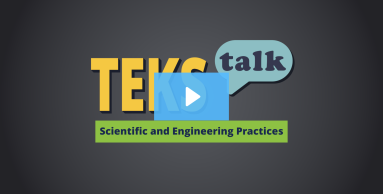- Science
- Grade 4
- Scientific and engineering practices
Science.4.1.B
use scientific practices to plan and conduct descriptive investigations and use engineering practices to design solutions to problems;

Knowledge and Skills Statement
The further explanation is designed to be a resource for educators that helps them better understand the topic their students are learning. Further explanations may be written at a more complex level than would be expected for students at the grade level.
Engineering practices include using the engineering design process to solve problems. Students engage with integrated concepts from multiple disciplines and use design thinking to design a solution to an authentic problem. There are multiple model variations of the engineering design process; however, they all share the basic practices of asking questions or defining problems, brainstorming, planning, creating and testing a design, and improving the design. Throughout the process, students are engaged in problem-solving, teamwork, collaboration, and effective communication.
The engineering design process is non-linear and iterative. Flexibility within the engineering design process allows a student to return to a step if needed. Analysis and improvement often result in additional questions or problems that can be solved through additional design process iterations.
Research
Gerlach, Jonathan W. “Elementary Design Challenges.” Science and Children 47, no. 7 (March 2010): 43-47.
http://www.jstor.org/stable/43175605.
Summary: 5th-grade students complete an activity to explore force and motion by building airplanes out of household items. The teacher in this article uses the design process, allowing students multiple chances to revise their project when things aren’t working. The class starts by partaking in a real-world engagement activity, such as watching videos of real airplanes and how they fly. The students then discuss the different forces that act on an airplane. The class is split into groups of two and given limited supplies to build their airplanes, seeing which group's plane can fly the farthest. Teachers should check for misconceptions throughout the activity and remind them to think of real airplanes rather than the paper airplanes they may be used to making. After students completed and tested their planes, they hypothesized why their planes were unsuccessful and made revisions.
